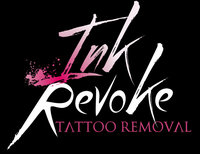Tattoo Removal Skin Types: Reactions on Different Skin Tones.

If you’re wondering how the tone of your skin could influence your treatment results, you’ve come to the right place!
Laser tattoo removal on dark skin poses a higher risk, and should always be approached conservatively.
Learn below the 5 key points relating to skin type and tattoo removal, and all about the Fitzpatrick skin type 1-6.
Related: Ultimate Guide to Laser Lightening
1. Why Your Skin Tone Matters
The tone of your skin will have a direct impact on your results.
How direct?
It’s the #1 factor on the list that determines estimated number of treatments during consultation.
Laser tattoo removal on dark skin will always take longer to achieve successful results.
Why does darker skin take longer?
Skin color is defined as the amount of melanin in your skin. The higher the melanin levels (dark skin) the more care needs to be taken during treatment.
Lower laser settings = slower results.
Lighter skin types will benefit the most, due to us being able to be more aggressive with the laser settings.
Higher laser settings = faster results.
It pays to be pale!
2. How The Laser Reads Your Skin
The laser works by making a distinction between the ink and your skin. The more contrast there is between the two, the more aggressive we can be with the laser settings.
The pic below is an ideal contrast between skin & ink:

Just like tattoo pigment, the melanin in your skin can reflect or absorb the beam’s light coming from the laser.
The laser energy will target the ink pigment in your skin. If the settings are used incorrectly, by someone who doesn’t understand the Fitzpatrick scale, unwanted side effects can be induced.
3. Skin Related Side Effects
Here’s why it’s so crucial to choose a technician/clinic with vast experience in treating all skin types.
Here’s the deal:
If certain protocols aren’t followed during treatment, your skin and melanin could be harmed in the process.
The two most common temporary skin related side effects are hypopigmentation and hyperpigmetation.
Hyperpigmentation is defined as the darkening of skin. This is a result of excess melanin formation.
This side effect is most commonly experienced in medium skin toned patients. The effects will heal over time.

Hypopigmentation after tattoo removal is defined as the temporary lightening of skin.
This effect is more typical on dark skin types and is a result of a reduction in melanin.
Hypo can take longer to heal, but is temporary and can be reversed by following your aftercare instructions properly.

4. Safest Laser Type
Their are many laser types and devices used for many unique aesthetic procedures.
There is no “one size fits all”
Furthermore, not all laser devices are cleared by the FDA to use on all tattoo removal skin types. Finding a clinic who utilizes a specific laser to treat all skin tones is crucial.
What’s the bottom line?
To effectively remove your ink and protect your skin, you need to be treated with a new generation Q-Switched ND: YAG laser.
Other laser wavelengths, such as the the Ruby and Alexandrite, are effective for removing resistant green and blue pigments. However, they run a higher risk of causing unwanted pigmentation issues.
5. The 6 Fitzpatrick Skin Types
An experienced clinic will determine your skin type 1-6 by using the Fitzpatrick scale.
The Fitzpatrick scale is a recognized tool for dermatological research into human skin pigmentation.
It was developed in 1975 by Thomas B. Fitzpatrick, a Harvard dermatologist, to classify the response of different skin types to UV light.
These skin types for tattoo removal are rated from 1 – 6. 1 being the lightest, and 6 being the darkest.
Refer to the pic below for a graph of the Fitzpatrick Scale, and a breakdown of each skin type 1 – 6. Then scroll down below for characteristics of each one:

1: IVORY
2: BEIGE
3: LIGHT BROWN
4: MEDIUM BROWN
5: DARK BROWN
6: VERY DARK BROWN
Conclusion
Understanding tattoo removal on dark skin, and all skin types is extremely important. There is no “one size fits all” treatment plan, or approach to all patients.
Strict technician safety protocol needs to be followed for each unique Fitzpatrick skin.
There is no denying that patients with light skin will benefit when compared to laser tattoo removal on dark skin. Greater care should be taken to avoid skin related pigmentation side effects.
Furthermore, the clinic and technician that removes your tattoo needs to have vast experience with all skin type 1-6.

Recent Comments